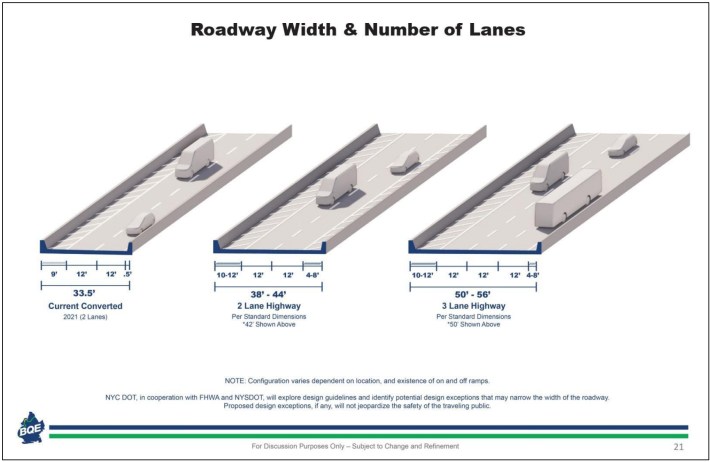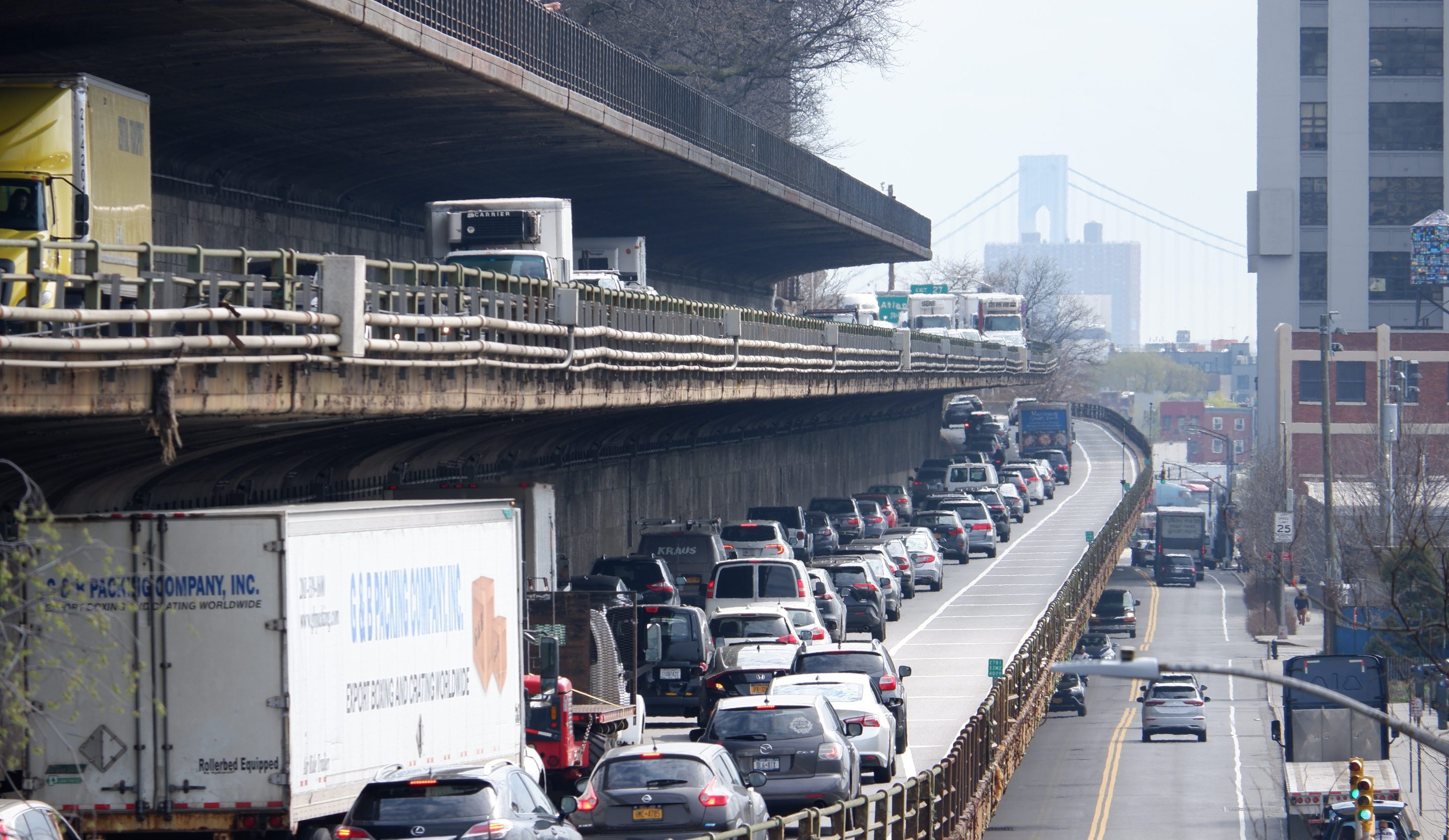Crashes on the triple-cantilever section of the Brooklyn-Queens Expressway dropped in the five months after ex-Mayor Bill de Blasio nixed a lane in each direction there in 2021, Streetsblog has learned — raising advocate concerns about the Adams administration's plans to widen the highway.
Car and truck collisions declined 65 percent on the Queens-bound side of the cantilever and 44 percent Staten Island-bound from September 2021 to January 2022 compared to 2019, according to an internal Department of Transportation analysis obtained by Streetsblog. Crashes with injuries declined 26 percent Queens-bound and 29 percent Staten Island-bound over the same five-month period, the analysis found.
"The evidence is clear: Fewer lanes on the BQE is better for people who use it and leads to safer streets," Kathy Park Price, a Brooklyn organizer for Transportation Alternatives, said after Streetsblog showed her the data this week.
"Any plan cannot expand highways and instead must focus on reducing our dependence on the harm caused by the BQE."
The cantilever section between Atlantic Avenue and Sand Street was a frequent danger zone before de Blasio cut the number of lanes — with a crash rate well above the state average for similar roadways, according to the 2020 report by the de Blasio-era BQE panel. Yet traffic violence on the crumbling stretch has continued to drop in the years since the lane reduction, according to city stats.
Crashes on the triple-cantilever stretch (dark blue line in the chart below) were down 18 percent year-over-year in 2022, according to figures crunched by Zhi Keng He of BetaNYC. Sections of the highway that are mostly three lanes wide (light blue line in the chart below) saw a 2-percent rise in collisions last year.
"To be looking at these numbers and even considering a three-lane option seems misguided," said Elizabeth Goldstein, president of the Municipal Art Society, an urban planning and preservation advocacy group. "There is a lot of evidence in these numbers that two lanes makes more sense."
De Blasio's decision in August 2021 to cut one lane in each direction to reduce the load on the deteriorating structure also brought the 1950s-era interstate closer to modern design standards by turning the three narrow 10.5-foot lanes into two 12-foot lanes and creating a new shoulder.
DOT under Mayor Adams plans to reconstruct a bigger highway to meet federal guidelines. Under the new plan, a new two-lane roadway would be up to 44 feet across compared to the current cantilever's 34 feet width, to fit in a federally mandated second shoulder. A three-lane highway could be as large as 56 feet under today's standards.

More lanes could be needed to relieve congestion and truck traffic that may spill onto neighborhood streets, the Adams administration claims. But city officials have so far neglected to follow the de Blasio panel's recommendations to curb cut-through traffic and disincentivize driving by closing ramps or tolling the East River Bridges.
A four-lane highway could handle traffic if the the city and state implemented policies like HOV lanes or congestion pricing, according to the Regional Plan Association. Congestion pricing has been delayed multiple times, and is currently not expected until mid-2024.
"There’s no reason to build three good lanes unless you want to add capacity," said Schwartz, the former city Traffic Commissioner. "For 40 years New York City has decided not to add capacity to its roads."
DOT planners believe the safety upgrades are likely due to the two-lane conversion bringing the roadway closer to modern federal design standards, according to agency spokesman Vin Barone. The officials do not think a rebuilt two-lane highway is inherently safer than one with three lanes, said Barone.
Asked for comment, Barone referred Streetsblog to a February statement by DOT Commissioner Ydanis Rodriguez that the city hopes to build "as narrow a structure as possible."
Additional reporting by Julianne Cuba






